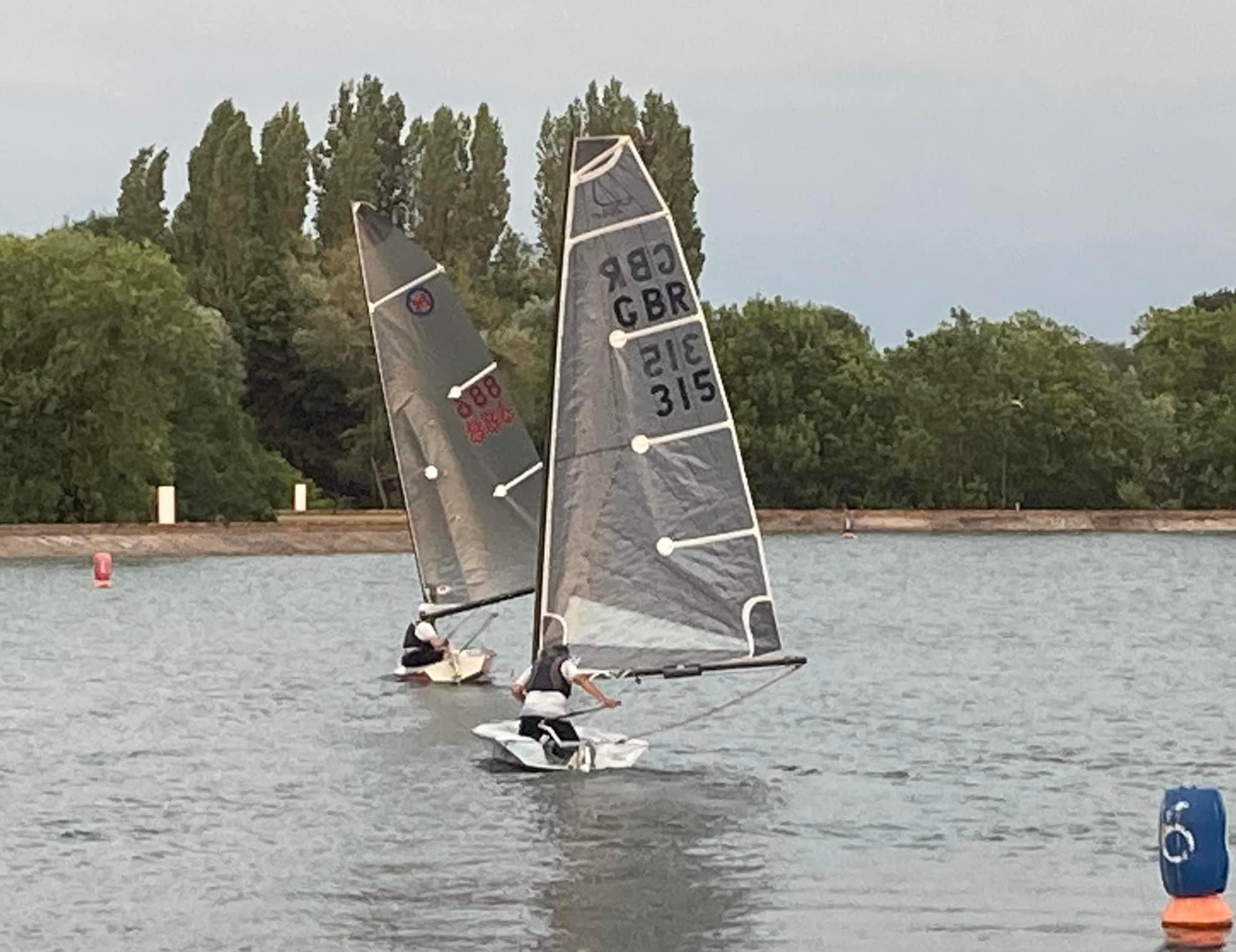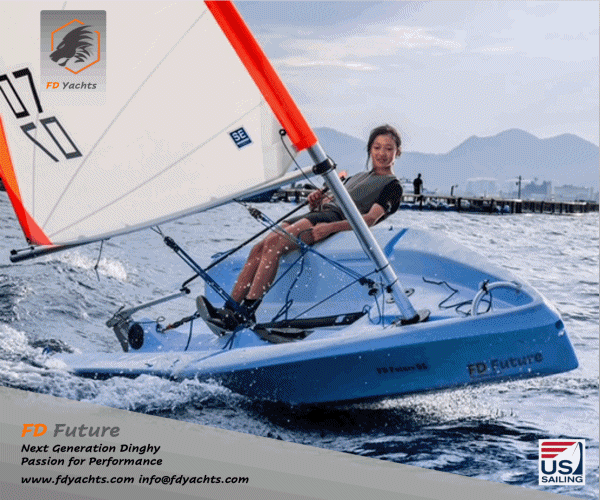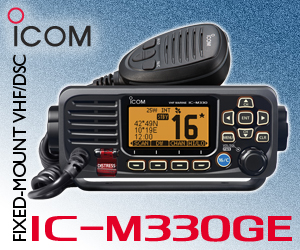Rule 15 and definition of room |
Post Reply 
|
| Author | |
redman 
Newbie 
Joined: 29 Nov 11 Online Status: Offline Posts: 26 |
 Post Options Post Options
 Quote Quote  Reply Reply
 Topic: Rule 15 and definition of room Topic: Rule 15 and definition of roomPosted: 23 Jan 24 at 11:16am |
|
Hypothetical Situation
2 dinghies, P and S, are sailing close hauled on opposite tacks. P is give way boat and S is right of way boat. P is unable to cross S so tacks directly infront / slightly to leeward of S. In order to avoid collision, S begins her own tack on to Port but a slight collision occurs with no damage. Both boats agree that P had completed her tack on to Starboard ahead of any impact, and as such there is no Rule 13 “While Tacking” infringement. However, there is disagreement over rule 15 “Acquiring right of way”. Both boats agree that P has become right of way boat before impact through either rule 11 or 12, but P had to initially give S room to keep clear. P argues that S could cleary see that P was tacking and that she would complete the tack before any rule 13 violation, and if S was truly manoeuvring promptly in a Seaman like way there would have been no collision. S argues that it doesn’t have to do anything until P becomes right of way boat which is when P completes her tack. Only from that time does S have to manoeuvre promptly in a seaman like way, which she does and there is still impact. Who is correct? I know there is a Case that confirms that a boat is not expected to know that another boat will break a rule, but I’m not sure if that really applies here? The parties are essentially pitching the opening words of Rule 15 “When a boat acquires right of way” against the definition Room with its “manoeuvre promptly in a seaman like way” |
|
|
REDMAN
|
|
 |
|
JimC 
Really should get out more 

Joined: 17 May 04 Location: United Kingdom Online Status: Offline Posts: 6662 |
 Post Options Post Options
 Quote Quote  Reply Reply
 Posted: 23 Jan 24 at 10:49pm Posted: 23 Jan 24 at 10:49pm |
|
Take a look at Case 53 in the case book.
"Allowing adequate time for response, when rights and obligations change between two boats, is implied in rule 15 by its requirement to allow a newly obligated boat ‘room to keep clear’. This rule does not require a boat clear ahead to take any action to keep clear as a windward boat before the boat clear astern becomes overlapped to leeward." I think that's reasonably analagous. Also RYA 2008/4 "The protest committee did decide that 'it was not conclusively proven that [Leeward] gave [Windward] room to keep clear under rule 15.’ That must mean that she did not give room. Rule 15 puts a positive obligation on a right-of-way boat. It is for her to show that she gave sufficient room. As she was not able to do so, [Leeward] broke rule 15 and [Windward] is exonerated for not keeping clear" |
|
 |
|
Brass 
Really should get out more 
Joined: 24 Mar 08 Location: Australia Online Status: Offline Posts: 1151 |
 Post Options Post Options
 Quote Quote  Reply Reply
 Posted: 24 Jan 24 at 10:43am Posted: 24 Jan 24 at 10:43am |
Case 27 A boat is not required to anticipate that another boat will break a rule. When a boat acquires right of way as a result of her own actions, the other boat is entitled to room to keep clear. The collision occurred almost immediately after AS assumed a close-hauled course on starboard tack. Therefore, BP needed to take avoiding action before AS had borne away to a close-hauled course. At that time BP had right of way under rule 13, and so AS broke rule 13. Right in point. To paraphrase When contact occurs almost immediately after a boat gains right of way, the other boat would have needed to take avoiding action before the change of right of way, that is, while she was the right of way boat, so as a right of way boat needing to take action to avoid the first boat, the first boat has not kept clear (Definition: Keep Clear). Case 3 says much the same thing about anticipate. So if P argues that S needed to/should have taken any action before P reached her close hauled course, P shoots herself in the foot. Case 53 A boat clear ahead need not take any action to keep clear before being overlapped to leeward from clear astern. I think this can be generalised as: A boat initially having right of way need not take any action to keep clear of another boat acquiring right of way until that boat actually does acquire right of way. Also RYA 2008/4 "The protest committee did decide that 'it was not conclusively proven that [Leeward] gave [Windward] room to keep clear under rule 15.' That must mean that she did not give room. Rule 15 puts a positive obligation on a right-of-way boat. It is for her to show that she gave sufficient room. As she was not able to do so, [Leeward] broke rule 15 and [Windward] is exonerated for not keeping clear" That’s not a paragraph I’d be proud of. The headnote is probably more helpful When there is contact between boats, a right-of-way rule will normally have already been broken. ... When there is contact shortly after a boat gains right of way, it is for her to show that she gave the other boat room to keep clear. Edited by Brass - 24 Jan 24 at 8:54pm |
|
 |
|
Dakota 
Posting king 

Joined: 15 Aug 22 Online Status: Offline Posts: 170 |
 Post Options Post Options
 Quote Quote  Reply Reply
 Posted: 25 Jan 24 at 3:57pm Posted: 25 Jan 24 at 3:57pm |
|
Thanks for the clear explanation..
Nice to see some life on here .
 |
|
|
Duncan
D-zero 315 |
|
 |
|
Post Reply 
|
| Forum Jump | Forum Permissions  You cannot post new topics in this forum You cannot reply to topics in this forum You cannot delete your posts in this forum You cannot edit your posts in this forum You cannot create polls in this forum You cannot vote in polls in this forum |
Bulletin Board Software by Web Wiz Forums® version 9.665y
Copyright ©2001-2010 Web Wiz
Change your personal settings, or read our privacy policy
Copyright ©2001-2010 Web Wiz
Change your personal settings, or read our privacy policy










-(1)-202408140552.gif)














 Printable Version
Printable Version Delicious
Delicious Digg
Digg Facebook
Facebook Furl
Furl Google
Google MySpace
MySpace Newsvine
Newsvine reddit
reddit StumbleUpon
StumbleUpon Twitter
Twitter Windows Live
Windows Live Yahoo Bookmarks
Yahoo Bookmarks Topic Options
Topic Options